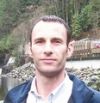LOOK AT RAINFALL DIFFERENTLY: “Drainage in the context of urban planning and development decisions has historically been an afterthought…let’s just get the water out of here,” stated Hugh Fraser, former Deputy Director of Engineering, City of Delta

“Delta’s rain garden program started with a phone call from Deb Jones, a volunteer with the Cougar Creek Streamkeepers. In 2004, she approached me with a request that the municipality undertake a stormwater pilot infiltration pilot project in North Delta. We identified the opportunity to build the first rain garden at an elementary school. The project was a success and so was the ensuing program. Within the first decade, for example, Delta had constructed a total of 50-plus rain gardens. 10 of these were located at elementary schools,” stated Hugh Fraser.










